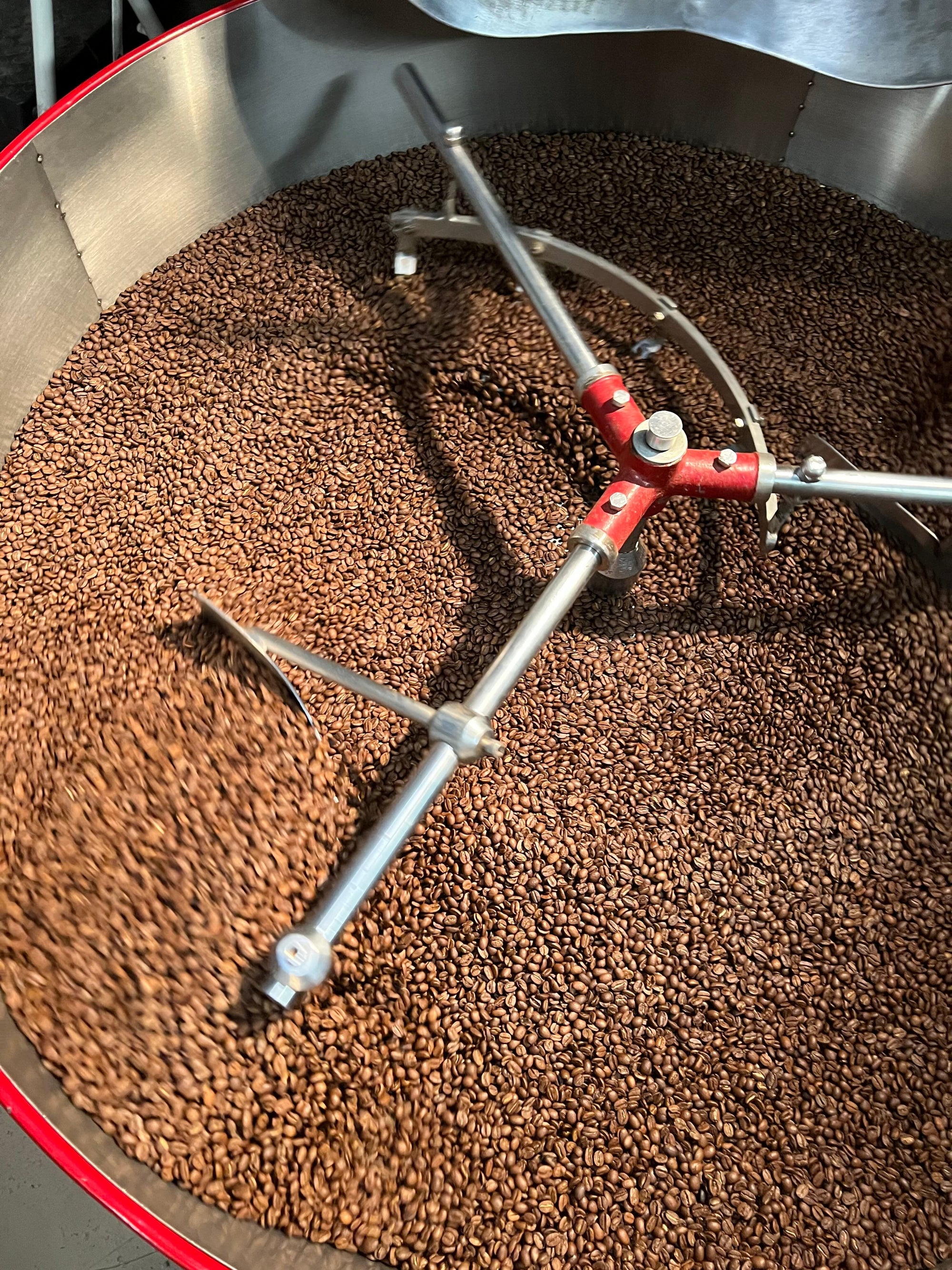

The 5 Senses: An Introduction to Roasting
Introduction
Roasting coffee is an art form that requires attention to detail and a keen sense of observation. As experienced roasters, we have discovered various ways to explain the intricacies of coffee roasting to our customers. However, the question is, what do the different roasts and titles really mean?
When roasting coffee beans, they lose moisture and weight. The longer the roast, the more moisture and weight is lost. In the pre-roasting process, we measure the coffee's weight before and after roasting and take notes on the percentage loss. Typically, single-digit weight loss percentages are equated with lighter roasts, while weight loss of 15% or higher results in darker roasts. This method has made our roasting procedure more consistent and informative, especially when we compare and taste coffees side-by-side.
At times, oil may appear when roasting certain coffees, but sometimes, the oil will not appear until hours later. Relying solely on the sight of oily beans can lead to over-roasting. Therefore, it is advisable to use all five senses when roasting coffee. Below is a brief summary of what to look for in each of the senses.
Feel
Measuring the temperature and density of the beans before roasting can help determine the initial temperature and moisture level of the beans. Various instruments, such as a food-grade infrared thermometer to measure bean temperatures and the Shore Moisture Tester to measure bean density, can be used for this purpose. Over time, the collected data on roasted beans can assist in determining ideal roasting temperatures for certain coffee densities.
Sight
Observing the beans as they roast is crucial. Temperatures and moisture can change depending on the variables of the day or season, causing the coffee to roast differently. By observing the color and look of the beans, one can establish a baseline of how beans normally roast and recognize when they behave differently.
Smell
Paying attention to the scents that develop while roasting is essential. As coffee roasts, it goes through a fascinating process where different chemicals that naturally occur in coffee beans change as they reach different temperatures, causing various aromas and fragrances to develop. As the roast progresses, a wide range of smells can be observed, from grassy and earthy to bread and baked goods odors. Additionally, utilizing one's olfactory senses can alert to any signs of fire developing. This is a common concern for every roaster, to keep their roasting facility from setting ablaze and avoiding loss of life and resources.
Sound
Keeping an active ear out for cracking sounds and other sounds that may occur during the roasting process is crucial. The first and second crack during roasting can be very close together, so it is vital to pay attention to avoid producing over-roasted beans. Furthermore, the roaster may make abnormal sounds that one has never heard before, so it is advisable to be familiar with the hums and reverberations of one's roaster.
Taste
Taste is the most rewarding part of roasting and may be used in the final phase. Ideally, multiple tastings or cupping sessions of the roasted coffee should be conducted. We cup as soon as the beans have cooled down out of the roaster, 24 hours, 48 hours, and 72 hours later. This provides an objective position from which to judge the coffee and allows for flavor and aromatic changes that often occur within the first few days after roasting. Ultimately, the ideal flavor is up to the drinker's judgment. There are no rights or wrongs when it comes to liking the taste of one coffee roast over another.
